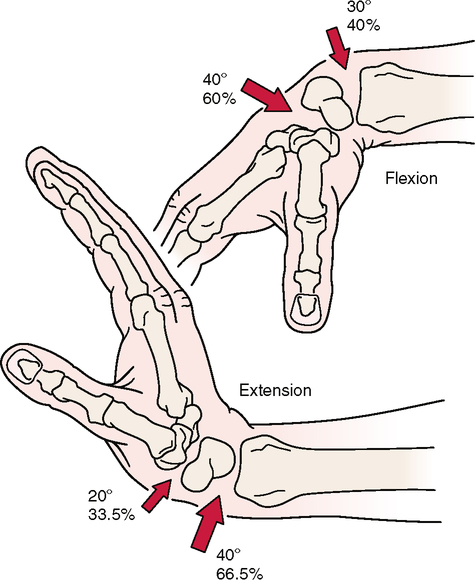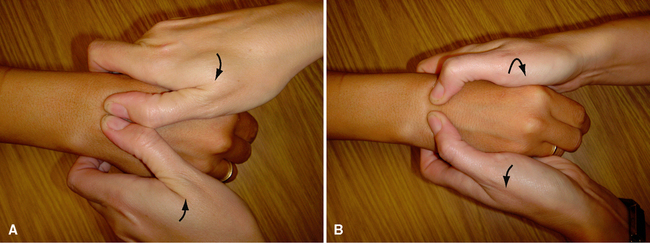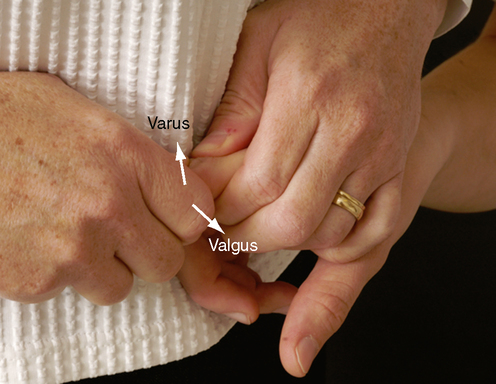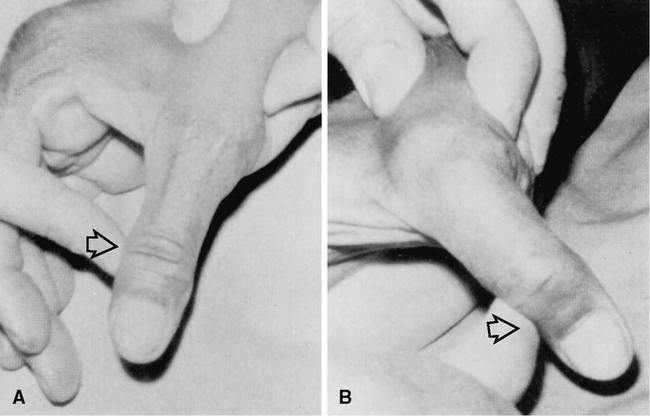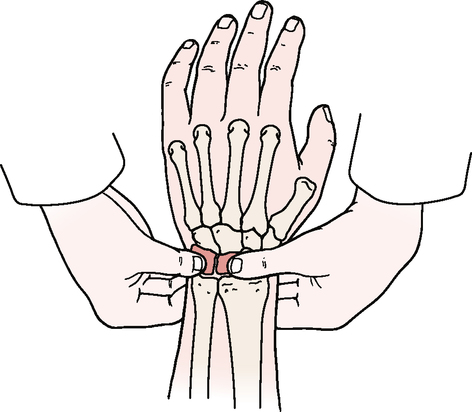CHAPTER 6 Ligamentous instability test for the fingers Thumb ulnar collateral ligament laxity or instability test Lunotriquetral ballottement (Reagan’s) test • Localized pain may occur over the injured tissue, especially when the individual is gripping, using the hand, or weight bearing on the hand. • Generalized pain may be present. • Swelling may or may not be present. • Clicking or catching may be noted with functional use. • The patient may complain of weakness in the hand and wrist.
FOREARM, WRIST, AND HAND
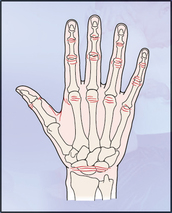
SPECIAL TESTS FOR LIGAMENT, CAPSULE, AND JONT INSTABILITY2–5
Relevant Special Tests
Suspected Injury
Relevant Signs and Symptoms

